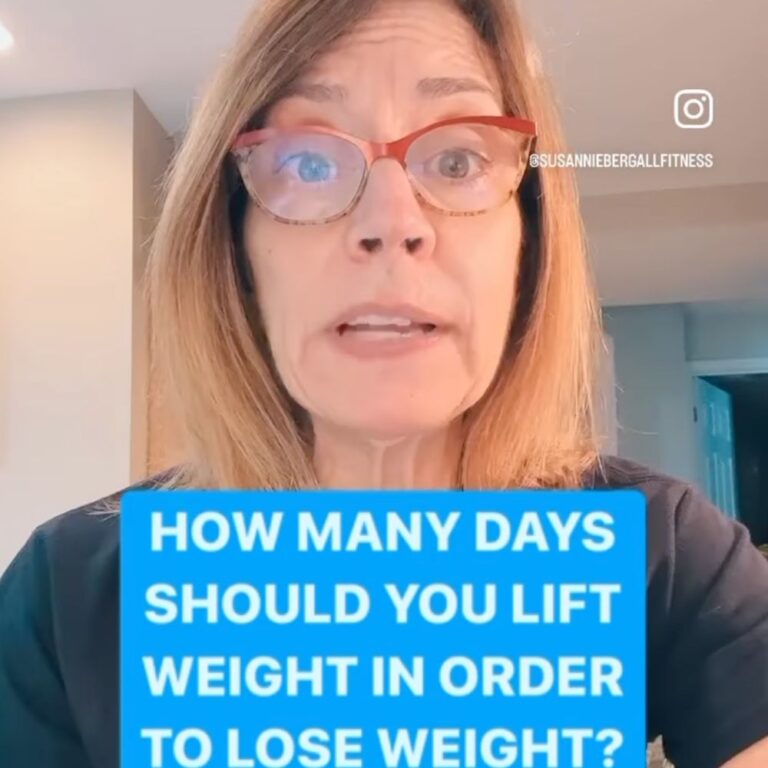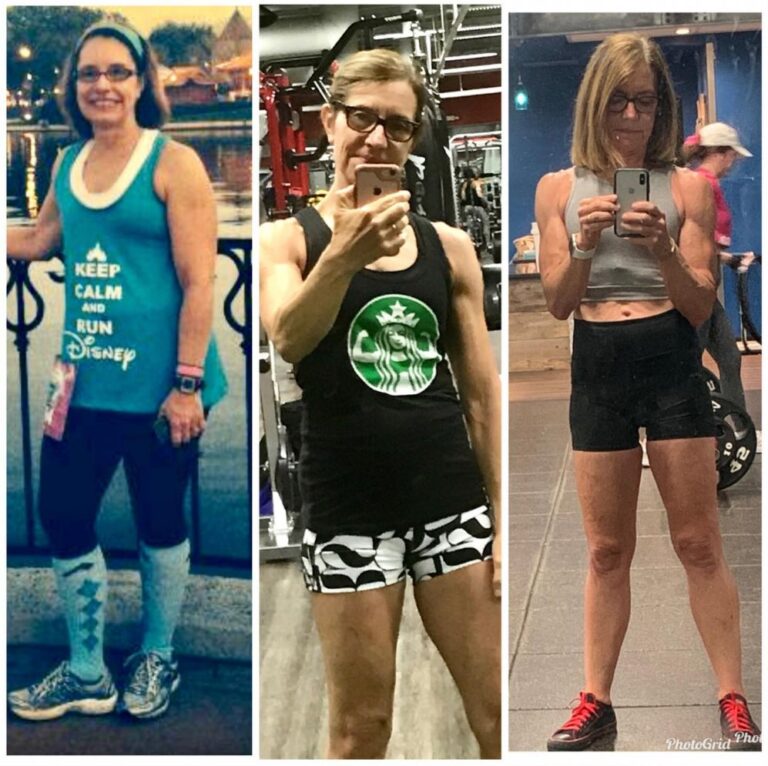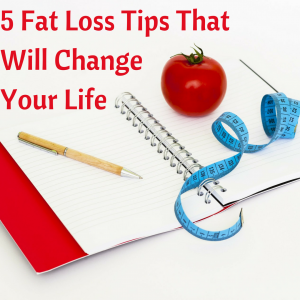 |
Have you ever struggled with losing weight? Women, how about that stubborn belly fat that seems like it will never go away? This list is for you. I have compiled a list of important tips that will help you lose the fat and the weight you have been trying to lose for so long. So sit back, get a cup of coffee, and off we go.
1. Create a Caloric Deficit
 |
If you want to lose fat you have to be in a caloric deficit. What does that mean?
Caloric Deficit just means that you have to consume fewer calories than your body needs. It’s that simple. But it’s not always easy.
Staying in a calorie deficit is the hard part. Many people randomly pick a low calorie amount and stay there.
For a long time.
That is difficult to do. There are many different approaches you can take to create a caloric deficit, but here is the one I like to use with my clients and have used myself.
High/Low Plan
I like to use this method with a majority of my clients. The reason I like it (and they like it) is because you aren’t staying at a low calorie number day in and day out. This plan varies your calorie count.
Staying too low for too long can have adverse effects such as:
❌ Fatigue
❌ Loss of lean muscle mass
❌ Hormonal issues
❌ Burnout – you will get tired of it pretty quickly
The name ‘High/low’ implies what you are going to do. Have some higher calorie days and some lower calorie days. Let’s break this down:
“High” Calorie days:
👉Are slightly higher than low calorie days
👉Are NOT unlimited or extreme high calories (after all we are trying to create a deficit)
“Low” Calorie days:
👉Are slightly lower than your high calorie days
👉Are NOT extremely low
The combination of the two will keep you in a calorie deficit.
How do you figure this all out? Here is a general formula to follow:
High Calorie Days= Body weight (BW) x 12-13. So, for example: Client BW is 150 pounds. 150 x 12-13 = 1800 -1950 calories for the ‘High’ days |
Low Calorie Days= Body Weight (BW) x 10-11 So, for example: Client BW is 150 pounds |
So for a given week, there will be 3 high calorie days, and 4 low calorie days. This keeps you in a deficit, but gives you some “relief” from the low calorie days.
*I generally recommend to have the higher calorie days on workout days, and the lower calorie days on non workout days. Definitely not required, and can work either way, but may feel better.
Why people like this:
✅ You are not in a constant state of low calorie – you get a perceived ‘break’ on the higher days
✅ Seems more doable than sustaining a super low caloric deficit for a long period of time
✅ Slow steady progress, nothing ‘extreme’
Like anything else, this requires time and patience and most of all consistency (which I will cover later).
For those that want results a little quicker, there are deficit plans that will keep you low for bursts of time – for instance a month of being in a deficit. It is a shorter amount of time overall, but will be a little more extreme.
No matter what your preference is, a caloric deficit is a MUST. A non-negotiable for fat loss.
2. Increase Your Protein
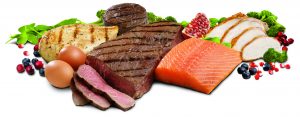
Protein can be a fat loss game changer. The benefits of protein are:
✅ Increases, builds and maintains lean muscle mass which will make you a calorie burning machine
✅ Keeps you filling fuller longer, which which is huge when in a calorie deficit
✅ Protein has a high TEF (Thermic Effect of Food) which means you burn more calories to process protein than the other macronutrients
✅ Helps protect your muscle from being used as an energy source when trying to lose fat
How Much Protein Do You Need?
Generally speaking:
0.7 – 1.0 grams of protein per pound of bodyweight per day*
(** If you have significant weight to lose, then go with the lower range of protein per pound of desired/goal weight.)
Example 1:
Current Weight is 150 pds
0.7 x 150 = 105
1.0 x 150 – 150
Protein range would be between 105 – 150 grams of protein per day
Example 2:
If a client weighs 280 pounds and wants to get to 180 pounds they could base their calculation on their goal weight of 180 pounds:
0.7 x 180 = 126
1.0 x 180 = 180
Protein range would be between 126 and 180 grams of protein per day
➡️ The key takeaway here is to find a protein range that works for you. The more active you are, you should aim for the top end of the range. The less active you are, you can aim for the lower end of the range.
Other reasons to consume more protein:
✅ Helps maintain bone mass and wards off osteoporosis
✅ Can help your body with repairing injuries
✅ Can be a factor in lowering blood pressure
Protein has SO many benefits. If you want to read more about protein check out this article I wrote breaking it all down even farther. Click HERE.
3. Track Your Calories and Protein: PLAN PLAN PLAN
 |
This is a biggie.
The people who are the most successful at weight loss are those that set calorie and protein goals and track both. Why is tracking so important? One of the main reasons is that we generally tend to under-estimate the number of calories we consume.
It happens with everything from eating an 8 oz piece of chicken that you thought was 4 oz (significantly different calorie counts), to going out to eat and getting a “healthy” meal but didn’t account for all of the oils and sauces that were used in cooking that added in an additional 300+ calories.
Tracking will help you see exactly what you are eating and how many calories you are actually consuming.
Here are a couple of tips to make tracking easier:
👍 Make a list of your go-to protein choices and other foods you want to incorporate.
👍 Find the calorie count and protein count for all of them.
👍 Some people like to use an app called MyFitnessPal to get calorie counts.
 |
If you are new to MyFitnessPal, a word of caution: it is a GREAT tool to use for tracking and obtaining information, but just be aware that the calorie counts that are in there are from users and can vary greatly.
My go-to list of protein and other foods looks like this:
|
Protein Sources |
Other Foods |
| Eggs | Spinach |
| Chicken | Cucmber |
| Turkey | Cherry Tomatoes |
| Greek Yogurt | Strawberries |
| Cottage Cheese | Watermelon |
| Ground Beef | Broccoli |
| Steak | Brussel Sprouts |
| Tuna | Coffee |
| Shrimp | Seltzer Water |
| Quest Bar | |
| Protein Shake | |
| Beef Jerky |
These are not the only foods I eat. This list is just my go-to list. I added in calorie and protein counts to all of them, so I can create meals that fit my allotments very easily.
As you can see, my list is pretty basic. Sometimes keeping it basic when you first start tracking makes the process much easier.
Once you have your go-to list, go shopping and get all of those foods ready to go.🍗🍓🍊🍤🍳
If you want to use an app to track your calories, then by all means do that!
You can also set up a spreadsheet and customize it how you want, or you can even use the old fashioned method of a food log (pen and paper) which is how I do it.
Use whatever method works best for YOU. Enter everything you eat and drink and start looking at totals at the end of the day.
REMEMBER! You are trying to get within a RANGE of calories and a RANGE of protein. Not an exact number.
I will say, tracking takes a little getting used to and sounds like it could be cumbersome, but it really isn’t. It does take some preparation upfront , but that prep work will make the process that much easier and it will be even more accurate.
TIP 💡 when going out to eat: Many restaurants have nutrition information on their websites and even sometimes right on the menus. If you are going out to eat, check out the restaurant’s website before you go. It could help you pick out a meal that will fit into your day.
The goal is not to track forever. Learning to track will give you a much better understanding of the calorie and protein content of foods (and carbs and fats as well) and that will enable you to obtain and maintain your fitness goals.
4. STRENGTH TRAIN
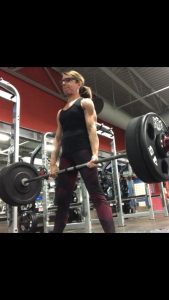 |
If you want to be a calorie burning machine, you need to build and maintain muscle. Period. In order to do that, you need to lift weights.
Enter strength training.
Here are a few interesting facts. Did you know:
➡️ As we age, adults can lose between 5-7 pounds of muscle every decade? That process is a part of aging and is called sarcopenia.
➡️ Strength Training will build and maintain muscle which will help you burn more calories.
➡️ Strength Training will help fight osteoporosis by building stronger bones and increasing bone density.
➡️ Strength Training will help you sleep better.
Attention Ladies!!!! There seems to be a myth out there saying strength training will bulk you up.
Please!! Let’s put it to rest right now.
Strength training will NOT bulk you up. As a matter of fact, it will do just the opposite.
Let me explain.
It’s pretty simple. It all boils down to hormone levels. Men have higher testosterone levels than women. Almost 15-20 times higher. Since testosterone is the primary hormone needed for muscle growth, women just can’t get muscular like men.
What kind of strength training should I do?
Think large compound movements. So, variations of Deadlifts, Squats, Pressing and Pulling. Here’s some examples:
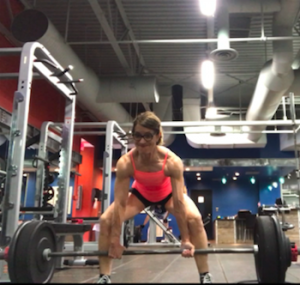 |
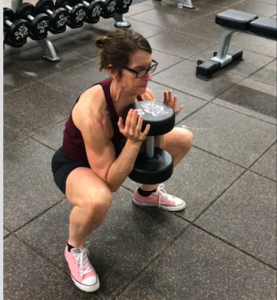 |
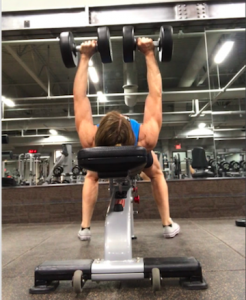 |
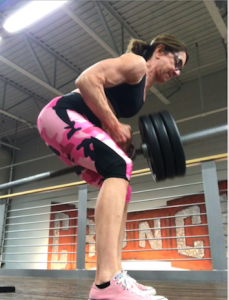 |
5. Be Consistent, Be Patient, Be Happy
 |
This is where many people trip up.
With everything that is outlined above, none of it will work if YOU don’t put in the work.
Definition of Consistency:
The achievement of a level of performance that does not vary greatly in quality over time
Apply this to your fitness/fat loss journey. You hit your nutrition, you hit your workouts. Not just once, but day in and day out.
That is consistency.
But remember:
Does it mean that you won’t trip up?
Nope.
Does it mean you have to be perfect?
Nope
We will all trip up and have small set backs. That is normal. But what we need to do when that happens, is re-group, and hop back on the next day. One day of going off your nutrition or missing a workout, etc. is NOT going to keep you from your goals.
I used to be Queen of thinking its over if I miss one workout, or go off my nutrition plan . I would spend time beating myself up for making a “mistake”, and that would set me up for perfection, more “failure”, and would ultimately keep me from moving forward.
What I have learned along the way, is we are in this for the long term. Not just for a day. When you think long term, having small setbacks are really insignificant in the big picture. As long as you hop back on track and keep going you’re good!
Check out this graph of a client’s progress:
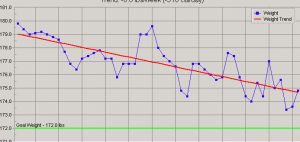 |
Notice the overall trend is down (red line).
There are ups and downs all along the way.
That is REAL LIFE. The overall trend is what you want to look at. Not each day by itself
This is also where patience comes into play. Results won’t happen in a day, two days, weeks, sometimes months – especially if you are focused on a number on the scale. Give it time. In a world of instant gratification, this can be one of the most difficult parts of a fat loss journey.
BUT…..
There are so many ways to measure your progress that are NOT the scale. I wrote about them HERE. The scale is a great tool, and I totally support it’s use, but sometimes we focus too much on it, and ignore the other signs of progress. Progress is happening. You just need to know where else to look.
And lastly, enjoy the journey.
SMILE
LIVE and ENJOY LIFE every day.
It’s a great ride.
If you have any questions, or would want some help with your fitness journey click reply below, and let me know how I can help you.
Susan ❤️

